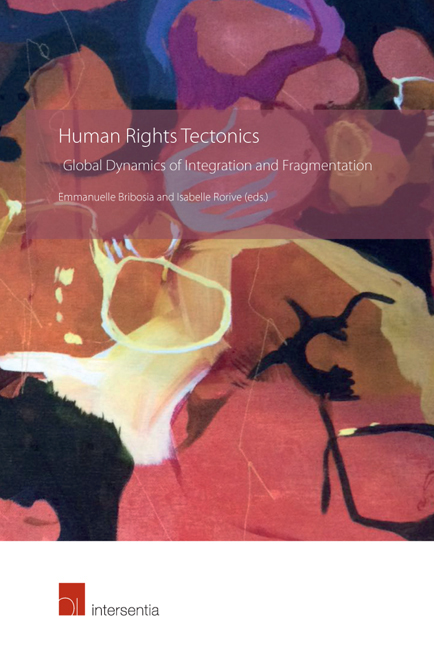Book contents
- Frontmatter
- Foreword
- Contents
- List of Cases
- List of Contributors
- Introduction to Human Rights Tectonics
- PART I PROMISES AND CHALLENGES OF AN INTEGRATED APPROACH TO HUMAN RIGHTS
- PART II HUMAN RIGHTS TECTONICS THROUGH AN ISSUE-BASED APPROACH
- PART III HUMAN RIGHTS DYNAMICS IN EUROPE
- The European Union in the International System of Human Rights Protection: Solo Singer or Voice in the Choir?
- Opinion 2/13 as a Game Changer in the Dialogue between the European Courts?
- Sharing of the Burden of Proof in Cases on Racial Discrimination: Concepts, General Trends and Challenges before the ECtHR
- Rethinking the Two Margins of Appreciation
- About the Editors
The European Union in the International System of Human Rights Protection: Solo Singer or Voice in the Choir?
from PART III - HUMAN RIGHTS DYNAMICS IN EUROPE
Published online by Cambridge University Press: 31 January 2019
- Frontmatter
- Foreword
- Contents
- List of Cases
- List of Contributors
- Introduction to Human Rights Tectonics
- PART I PROMISES AND CHALLENGES OF AN INTEGRATED APPROACH TO HUMAN RIGHTS
- PART II HUMAN RIGHTS TECTONICS THROUGH AN ISSUE-BASED APPROACH
- PART III HUMAN RIGHTS DYNAMICS IN EUROPE
- The European Union in the International System of Human Rights Protection: Solo Singer or Voice in the Choir?
- Opinion 2/13 as a Game Changer in the Dialogue between the European Courts?
- Sharing of the Burden of Proof in Cases on Racial Discrimination: Concepts, General Trends and Challenges before the ECtHR
- Rethinking the Two Margins of Appreciation
- About the Editors
Summary
The musical metaphor in the title of this chapter echoes a publication by Olivier De Schutter some time ago, entitled ‘L’ Europe des droits de l'homme: un concerto a plusieurs mains’. De Schutter's contribution dealt with the relations between the European Union (EU) and the Council of Europe, and especially those between the Court of Justice of the European Union (CJEU) and the European Court of Human Rights (ECtHR). His main argument was that, despite the presence of an element of competition between the two courts, their relationship should essentially be seen as a complementary and harmonious coexistence, similar to that of two piano players sitting side by side playing one single piece of music.
This was the dominant view in the legal literature until recently, and it was supported by a number of factors, such as: the increasing direct dialogue between the members of the ECtHR and the CJEU; the fact that the Treaty of Lisbon contained the promise of a future accession of the EU to the ECHR; and the peaceful coexistence between the two organisations also at the political level, as expressed by the Memorandum of Agreement between the Council of Europe and the EU concluded in 2007, and the modus vivendi reached by the two organisations when the EU's Fundamental Rights Agency was created around the same time. The Agency was instructed, in its founding Regulation, to cooperate closely with the human rights bodies of the Council of Europe.
However, many things have happened since and it would seem appropriate to reconsider this positive assessment in the light of recent developments. Although this chapter will take, as its core, the developments in the relationship between the CJEU and the ECtHR (section 2), it will also examine the attitude adopted by the Court of Justice to other international human rights instruments (section 3) and will end with an examination of the role played by the political (non-judicial) institutions of the EU within the global landscape of international human rights law (section 4).
- Type
- Chapter
- Information
- Human Rights TectonicsGlobal Dynamics of Integration and Fragmentation, pp. 225 - 242Publisher: IntersentiaPrint publication year: 2018



